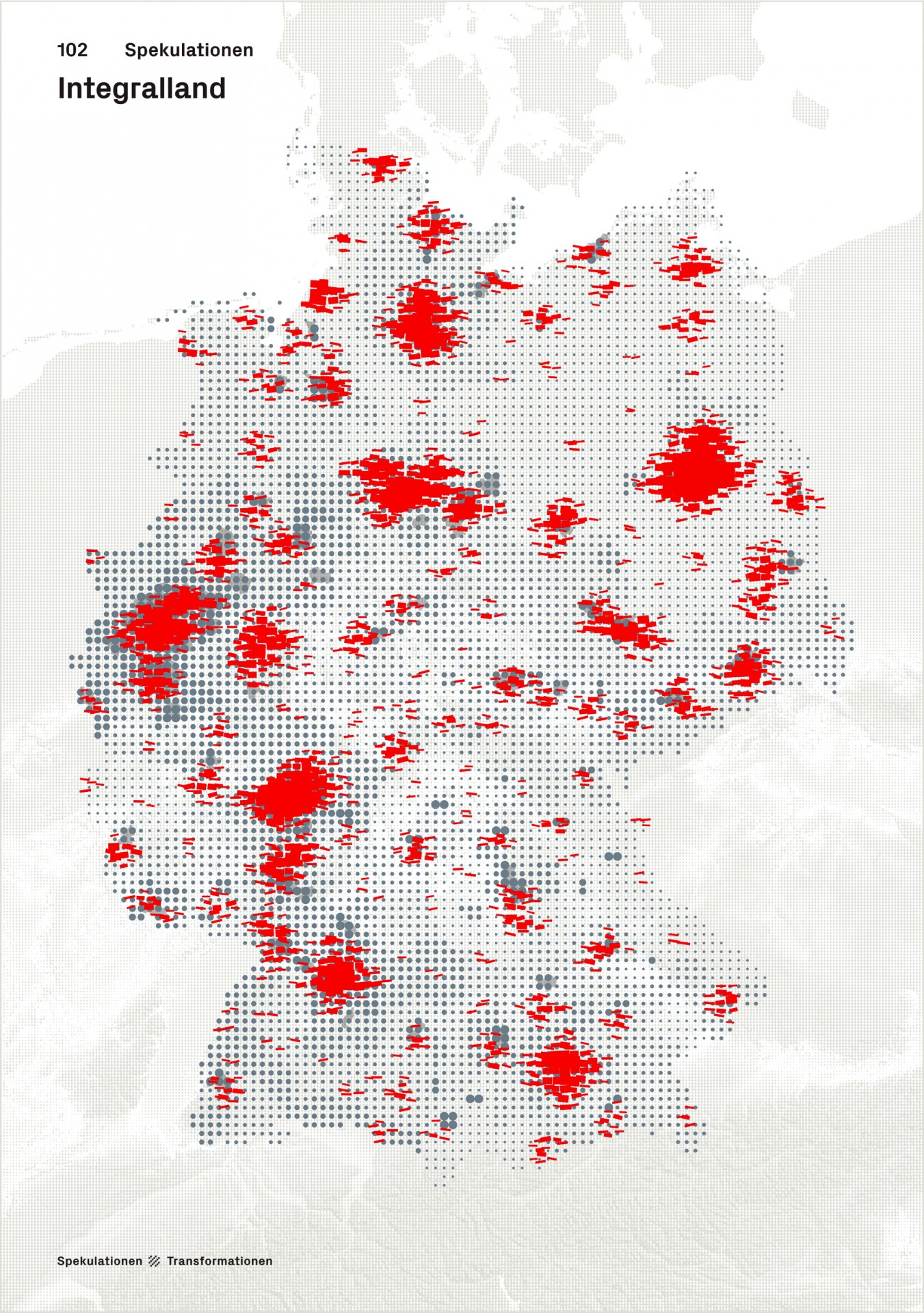

Speculation map of the Baukulturatlas, graphic design: onlab
Speculation—“Integralland”
Germany today, in the year 2050, is a communitarian, organic country of immigration offering the bulk of its population access to top-quality educational options in a stable democracy characterized by civic commitment. The country’s federal structure has been trimmed to five administrative units—north, east, central, west, and south Germany—that have become regionally specialized: east Germany is the site of international institutions and educational facilities primarily oriented toward East Europe and Asia; central Germany is a hi-tech production location; west Germany is a stronghold of environmental technology in high international demand; south Germany is a knowledge-based service economy; and north Germany is a progressively organic agricultural and energy region. Almost the entire population of 85 million lives in cities. Thanks to economic-sector management-planning and migration restrictions in densely populated metropolitan regions, as well as positive attitudes to foreigners, migration has not centered on a few big cities but has promoted the spread of smaller cities across Germany. The cities of Germany today are compact and have attractive urban centers and local flair. Urban sprawl has been largely checked: peripheral commuter estates are edged by organic belts and nature zones; green buffer and local recreation areas border on depopulated landscapes now used as farms for the production of renewable energy and foodstuffs. Attacks on urban participation centers and minor acts of sabotage against energy facilities are on the increase of late. And occasional protesters are sometimes seen in urban parks being discreetly led away by the police.
More Information in the Baukulturatlas